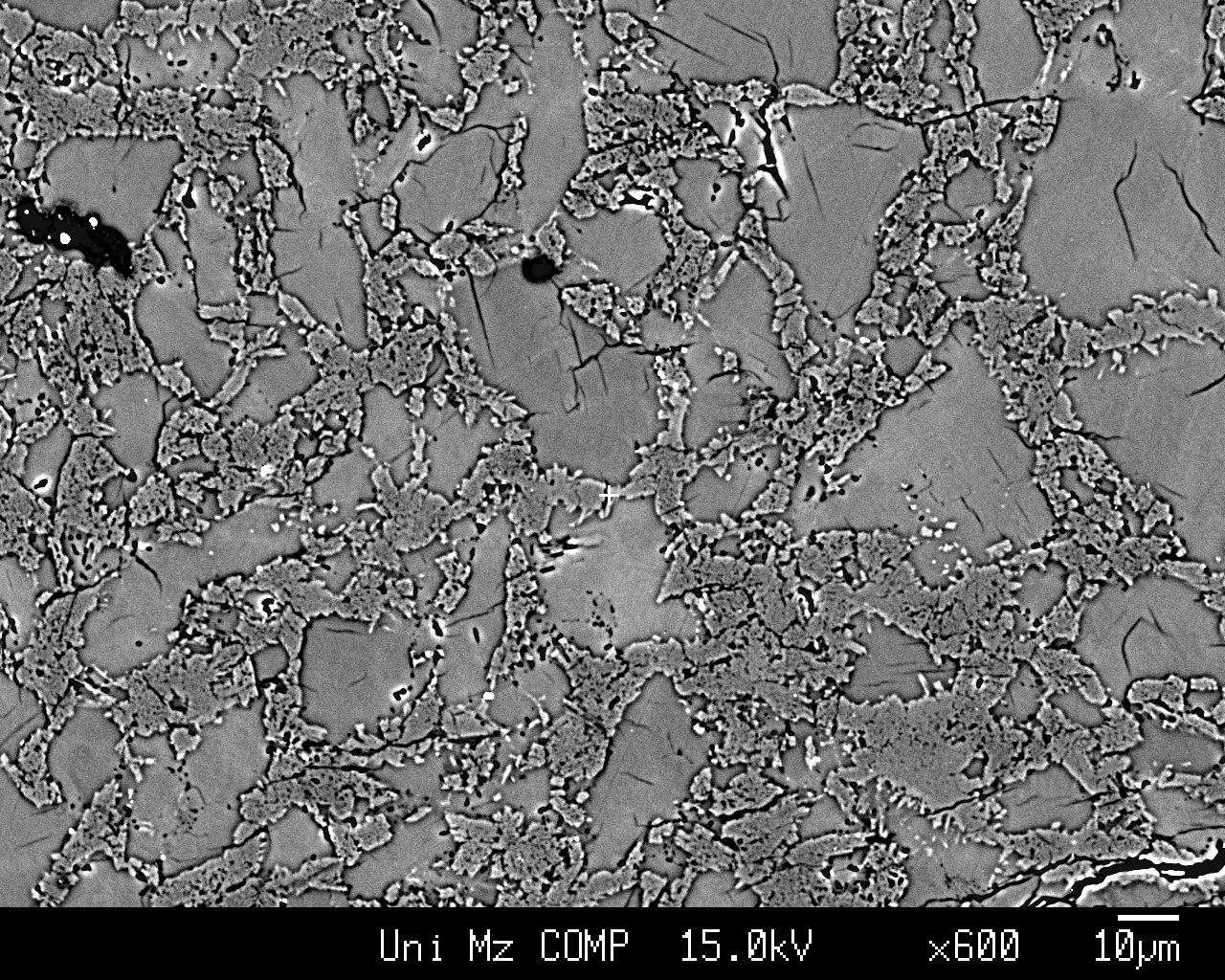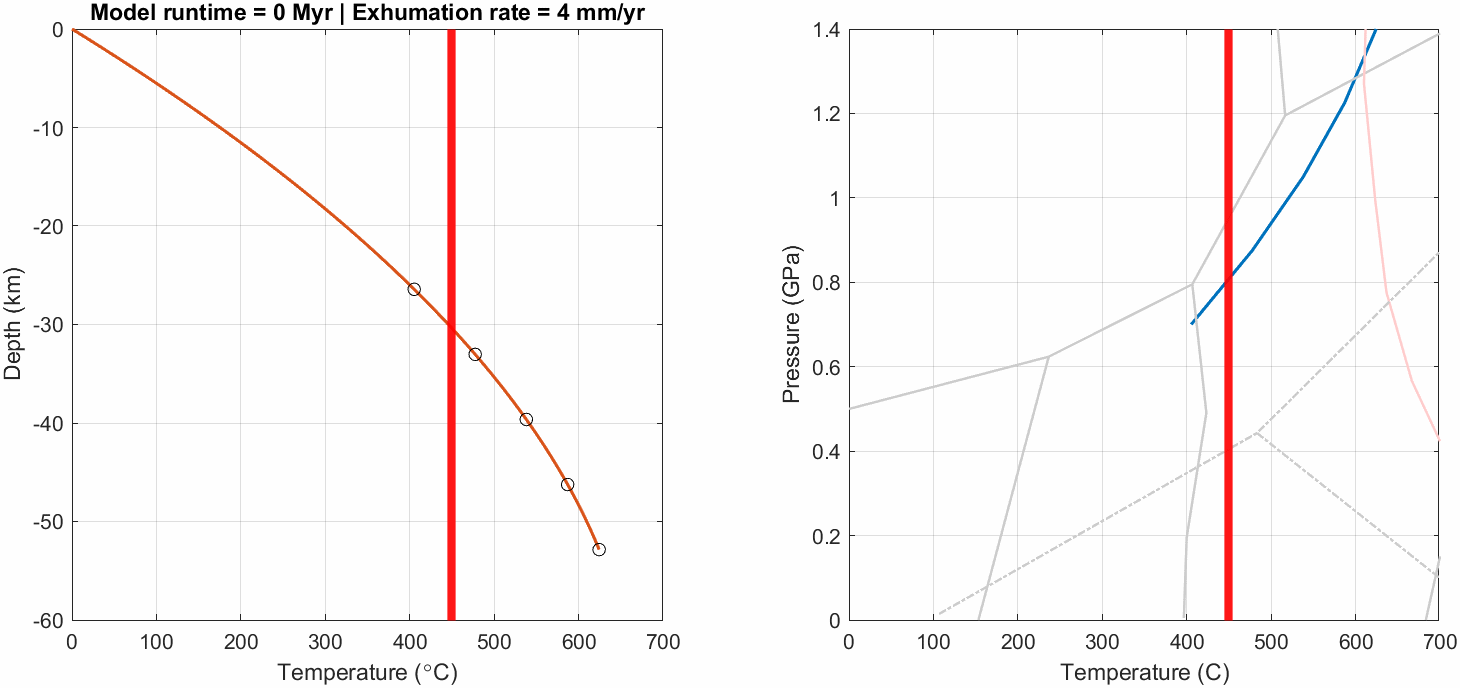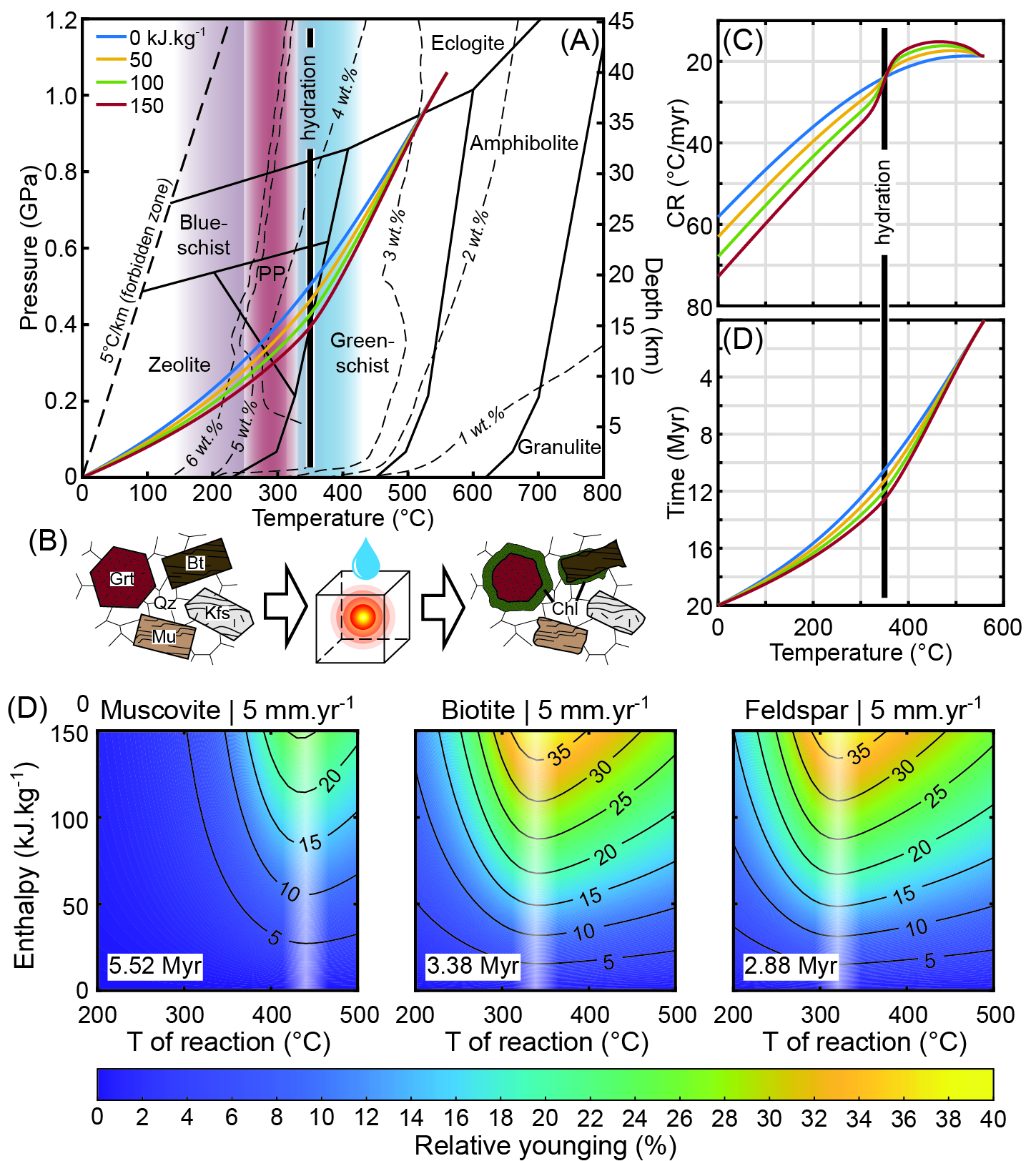Numerical modelling applied to exothermic reactions
Exothermic processes such as hydration (e.g., chloritization & serpentinization), shear heating and the crystallization of melts can locally perturb the thermal state of the crust and lead cause non-linear cooling path of exhuming rocks. Using T1dH we can simulate this process and quantify the resulting P–T–t paths.
Exothermic reactions and 39Ar–40Ar thermochronology
Retrogression and hydration release heat during exhumation, affecting isotopic systems and distorting apparent cooling ages. A 1D numerical model simulating exothermic hydration shows that even minor fluid incorporation (~10%) can significantly lower apparent ⁴⁰Ar/³⁹Ar ages in muscovite, biotite, and feldspar—up to 30% depending on grain size, exhumation rate, and enthalpy release. The effect peaks when hydration occurs near the closure temperature of the thermochronometer. This mechanism explains mica age rejuvenation in regions like Sifnos (Greece) and Tian Shan (China) and applies to other heat-releasing processes like shear heating or magma emplacement.
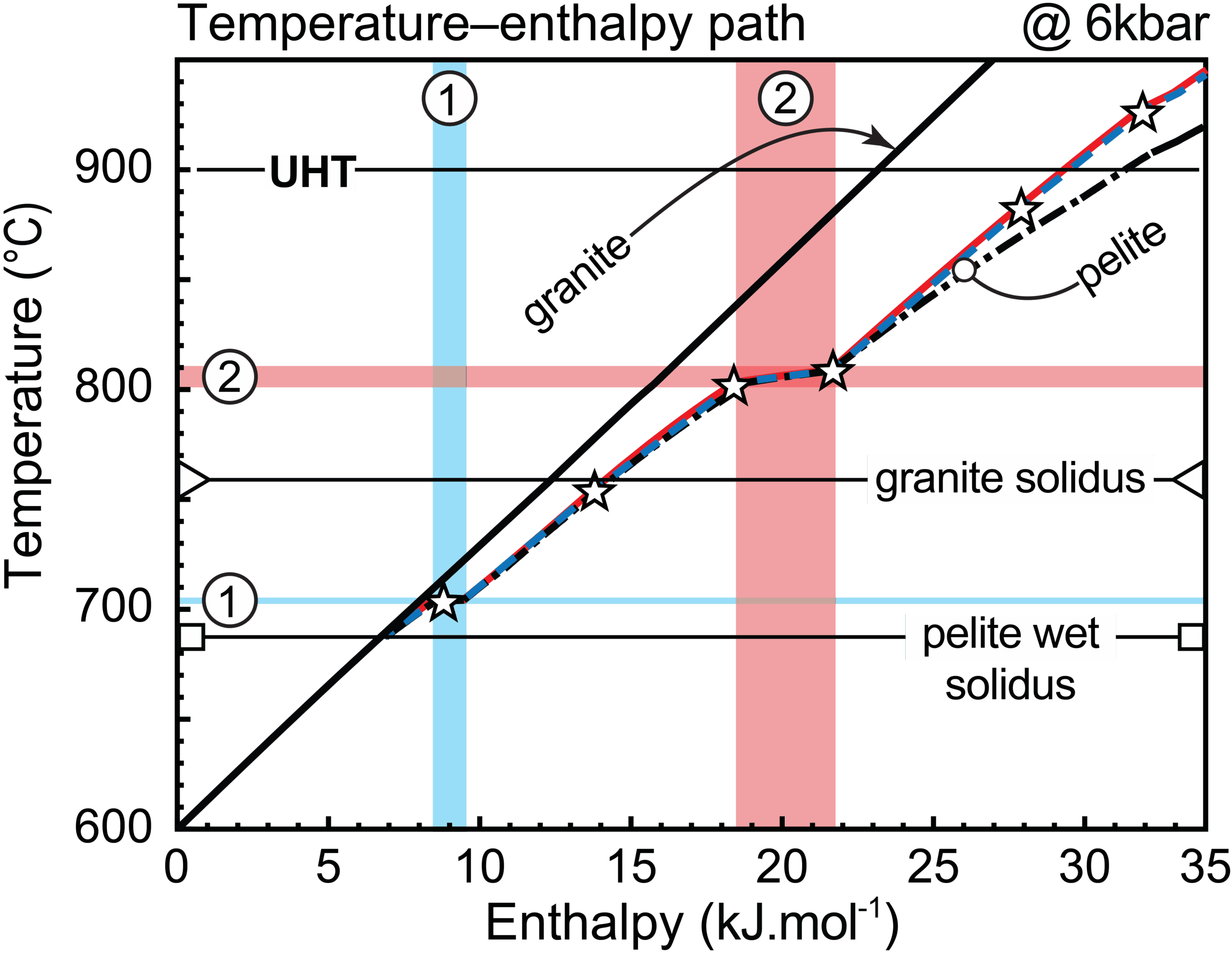
Thermal buffering in the orogenic crust
Melting reactions in metamorphic rocks are strongly endothermic and can significantly impact orogenic heat budgets. Using thermodynamic modeling, it’s shown that fertile metapelites, though volumetrically minor, undergo near-isothermal melting, acting as thermal buffers and limiting peak temperatures. In contrast, refractory granites heat more linearly due to minimal melting. As a result, metapelite-derived temperature estimates may underestimate the true thermal maximum of the crust. This lithology-dependent thermal behavior can cause thermal stratification and may explain why ultrahigh temperatures (>900 °C) are recorded only in refractory rocks, not in fertile compositions.
Inverting garnet zoning patterns for exhumation paths
By combining thermal models with mulitcomponent diffusion in garnet, we can invert for the physical conditions controlling the thermal evolution of the rocks found in exhumed metamorphic terranes (e.g., exhumation rate, exothermic processes involved etc.). This example shows one best-fit model where the compositional data is fitted.
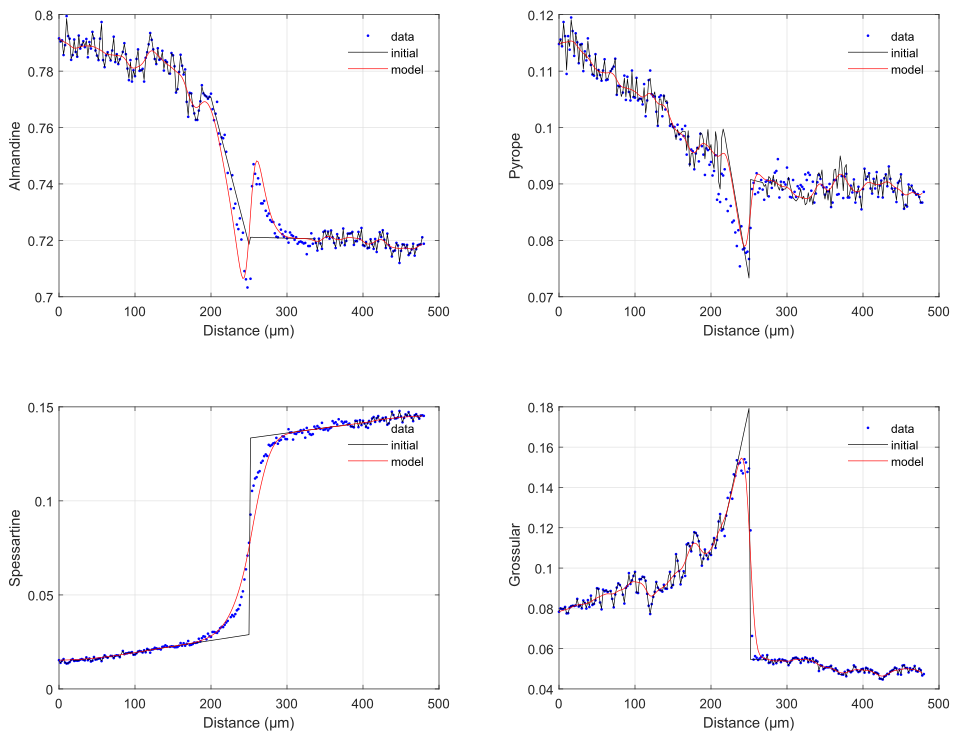
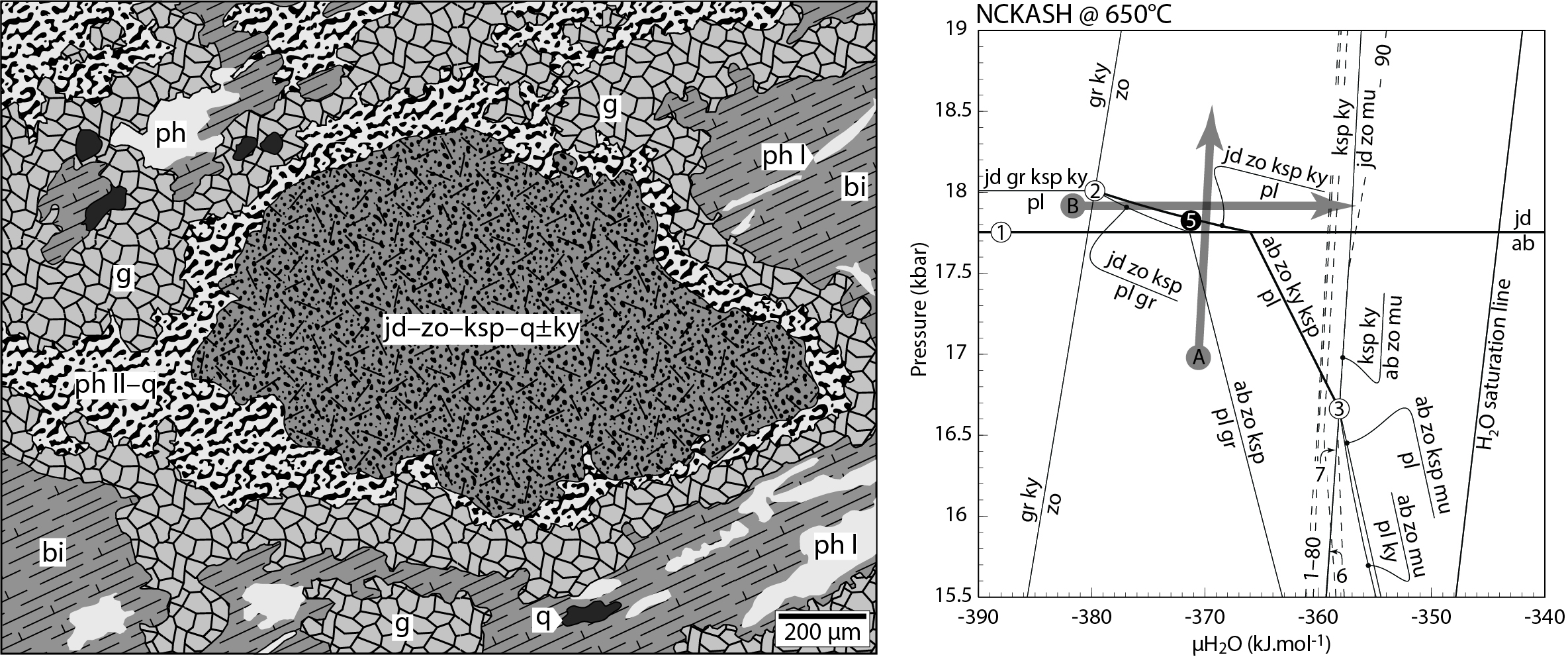
‘Eclogitization’ of felsic crust
‘Eclogitization’ of granitoids can occur without external water due to biotite, which contains bound H₂O. During high-pressure metamorphism, partial biotite breakdown raises local μH₂O, driving the transformation of plagioclase into eclogite-facies minerals. External water, if present, is taken up by phengite and epidote. Upon decompression, these rocks may dehydrate and retrogress. Such textures form under closed-system, low-deformation conditions and are typical in high-pressure terranes like the Western Alps and Western Gneiss Region.
Experimental constraints on the kinetics of the albite-breakdown as function of grain size and reaction overstepping
The transformation of albite to jadeite and quartz involves a ~20% volume reduction and influences the strength, buoyancy, and long-term stability of orogenic roots. Eclogitization is often incomplete, especially in dry, felsic crust, due to sluggish kinetics and significant reaction overstepping. To investigate the poorly known kinetics of this reaction, I conduct high-pressure experiments were conducted on natural albite using a piston-cylinder apparatus. The data allow estimation of reaction rates as a function of grain size, overstepping, and time, constraining the transformation kinetics in coarse-grained, fluid-deficient felsic rocks typical of (U)HP terranes.
